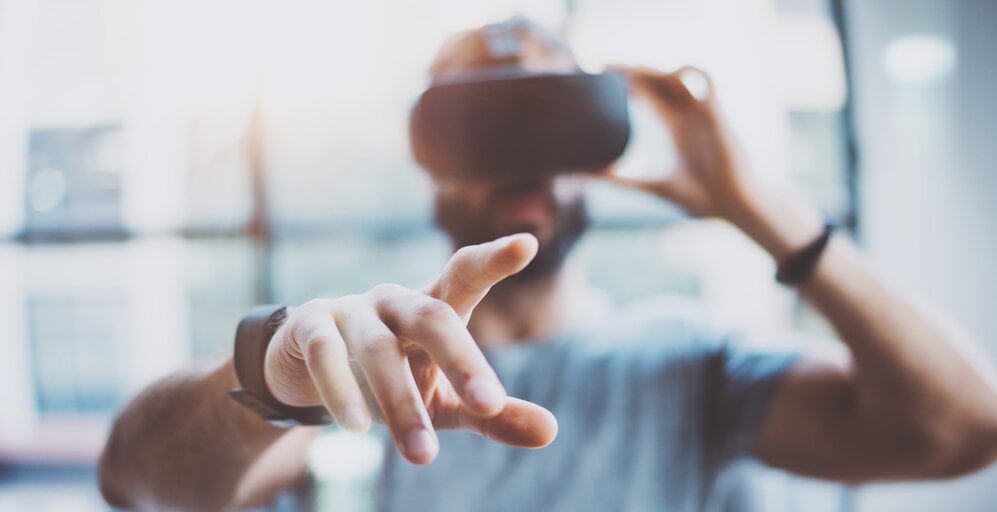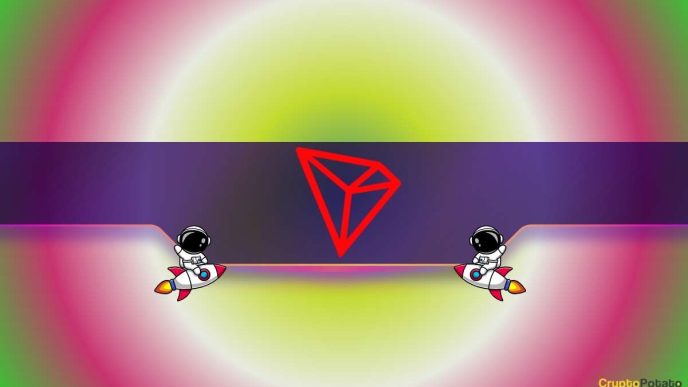The specific medium of virtual reality (VR) has promise in helping patients suffering from mental illness, research shows, and companies are already pushing into the frontier.
According to a recent report published by Nature Review, immersive environments offered by VR, coupled with artificial intelligence, can help deal with feelings of anxiety, psychotic symptoms, post-traumatic stress, eating disorders, depression, and stress management.
Two companies developing mental health applications for virtual reality—specifically Meta Quest and Apple Vision Pro headsets—are Tripp and Liminal VR, which make virtual experiences aimed at focusing, inspiring, and calming the mind.
Liminal VR
“There’s something unique to experiencing content from a first-person perspective and how it affected people,” Liminal VR co-founder and CEO Damian Moratti told Decrypt. “We knew that there was something to that, and that’s what made VR different.”
Co-founded by Moratti and Nick Busietta, Melbourne-based Liminal launched its mental health experience in 2018. As Moratti explained, Liminal VR employed not only a team of artists and developers but also neuroscientists and psychologists to build the Liminal app.
“The driving question for Nick and I was why and how,” Moratti said. “So then we recruited scientists to help us find that answer and to help guide us in UX design.” The finished product was Liminal.
Liminal VR gives users the option to select a variety of experiences, including calm, energy, pain relief, and awe.
“Awe, in general, can be oversimplified and described as a combination of vastness and surprise. So we use the term vastness instead of scale, not because scale isn’t effective for awe,” Moratti said. “It is, but vastness incorporates scale and can also incorporate other things.” He gave as an example the sight of an eight-year-old lifting a car to free their parent.
“You might experience awe because you’re witnessing the vastness of human potential,” he said.
In addition to wellness applications, Liminal VR also offers training simulations on things like how to put out a fire, pick mushrooms, landscaping, and construction.
As Moratti explained, fully engaging with VR is recommended because it’s fundamentally different from traditional media. Unlike flat screens on phones, PCs, or consoles—where there’s a clear separation between you and the content—VR immerses you directly in the experience, making it uniquely immersive.
“In VR, you’re plugged in, and completely immersed in inside the virtual world,” Moratti said. “You have a sense of agency within that world, and you’re experiencing the content from a first-person perspective. You’re getting this sense of scale, vastness, and conceptual depth that you just cannot replicate in other technologies, and that has different psychological effects compared to other media.”
Tripp
For Los Angeles-based Tripp, virtual reality alone isn’t enough to provide a tailored experience. In July, the startup announced it had integrated generative AI into its VR experience, which the company called Kōkua, taken from the Hawaiian word for help, assistance, or support.
Tripp was founded in 2017 by Nanea Reeves, a former Electronic Arts (EA) Senior Vice President and Machinima COO.
[Kōkua] is a deeply spiritual word to Hawaiians,” Reeves told Decrypt. “It really comes down to this concept of giving without expectation of receiving that.” She added that Kokua also fuels a desire to keep the environment clean.
Reeves said the idea behind TRIPP began to form after seeing how virtual reality was being used to give thrills and chills in video games.
“If you could create fear that easily, even though someone knows they’re in their living room, they feel like they’re going to fall off a cliff,” she said. “I kept wondering, ‘What else could you make someone feel?’ And could you use this technology, specifically the immersion, to produce positive feelings?”
As Reeves explained, Tripp worked with neuroscience advisors and mental health professionals from the National Mental Health Innovation Center at the University of Colorado, who helped with data collection concepts and infrastructure.
“Since we went live in December of 2019, right before the pandemic, having all that mood data from the people using our app gave us the data foundation to build a recommendation engine and power a lot of our audio content,” Reeves said.

As Reeves explained, when you share your thoughts and feelings with the AI, Kōkua provides personalized reflections, custom meditations, and mindfulness practices.
“You can interrupt it if you play around with it,” she said. “You can even say, ‘Give me a meditation that helps me focus on getting my taxes done, and do it in the style of a Shakespearean sonnet.’ The more specific you are, you can see how it will adapt in real-time.”
According to Reeves, personal experiences, including a mental health crisis as a teenager, led her to explore the use of virtual reality technology, video games, and meditation for wellness.
“There was something now I understand that I felt like this sense of agency and control while I was playing games that maybe I didn’t feel in my physical reality, but it was cumulative,” Reeves said.
“The real goal is that present awareness, and if you think about it, virtual reality is a very powerful tool to capture your awareness, and bring it present,” she added.
Edited by Ryan Ozawa.
Generally Intelligent Newsletter
A weekly AI journey narrated by Gen, a generative AI model.
Source link
Jason Nelson
https://decrypt.co/246226/how-companies-are-using-virtual-reality-and-ai-for-mental-health-therapy
2024-08-23 23:00:38














